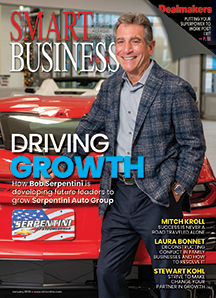Tom Feeney was not under any pressure to transform Safelite Group in 2013.
The company operates Safelite AutoGlass, the largest provider of vehicle glass repair, replacement and calibration services in the U.S., and Safelite Solutions, a claims management partner to insurance and fleet companies.
In 2009, Safelite started focusing on its associates first. Having inspired, engaged employees helped the company quadruple its sales, going from $500 million to nearly $2 billion today.
This transformation to a people-first strategy, however, wasn’t enough, and it was simplistic to expect that happy employees always translate to happy customers.
Around 2013, Feeney, the company’s president and CEO, asked another strategic question: Was the company operationally focused, product focused or customer focused? After a series of employee surveys, Feeney and his team concluded that Safelite was operations focused. The company prioritized internal efficiencies and productivities.
Despite metrics that seemed to indicate customers were already happy with Safelite, Feeney felt there was more work to be done.
“We’re now telling our leadership and our organization that we have another transformation in us, and even though we have net promoter scores of 83, 84, we do not believe that we’re a customer-driven organization. We believe we’re operation focused and, therefore, internally focused,” Feeney says.
“In order to achieve the full potential of the business, we had to embark upon another transformation with all of the challenges associated with transformative work in the company,” he says. “Only this time, we were twice as big as we were when we started the last time — twice as many associates to convince, twice as many leaders to educate and communicate to and make sure that they stayed with us.”
The work of transformation
Feeney needed everyone to understand why he was advocating for another transformation when Safelite was already so successful.
The company added a customer effort score to its net promoter survey. It confirmed what Feeney suspected, Safelite wasn’t easy to do business with. By looking at the business through the eyes of a customer — to see that the company often did its own thing and force-fed it to customers — helped company leaders rally around the need for change.
Transformative work takes courage, he says. You cannot be afraid to organize for the future, even if it affects the people who helped you get to where you are today.
“It’s hard work. I can honestly tell you I think about it every day. It’s very enjoyable work, but the joy comes in periods of time. You can’t look for joy every day. The joy comes six months, 12 months out, when you’re reflective and looking back at how the organization has changed,” Feeney says.
CEOs have to know their business and employees better than anyone, while having a vision for where they want to go. Once they articulate that vision to get buy-in and explain the employees’ role in that vision, they can begin to lay plans to achieve it.
“The most important point is sticking to it,” he says. “So often I’ve seen leaders state their vision and then the next year state another vision and then the year after that state another vision.”
Organizations, large or small, don’t like flavors of the month, Feeney says. Employees want to know what the company will look like in five years.
Feeney also made one person the strategy’s architect to add accountability.
Inside your vision, he says you need milestones and measurements to help you check in along the journey.

